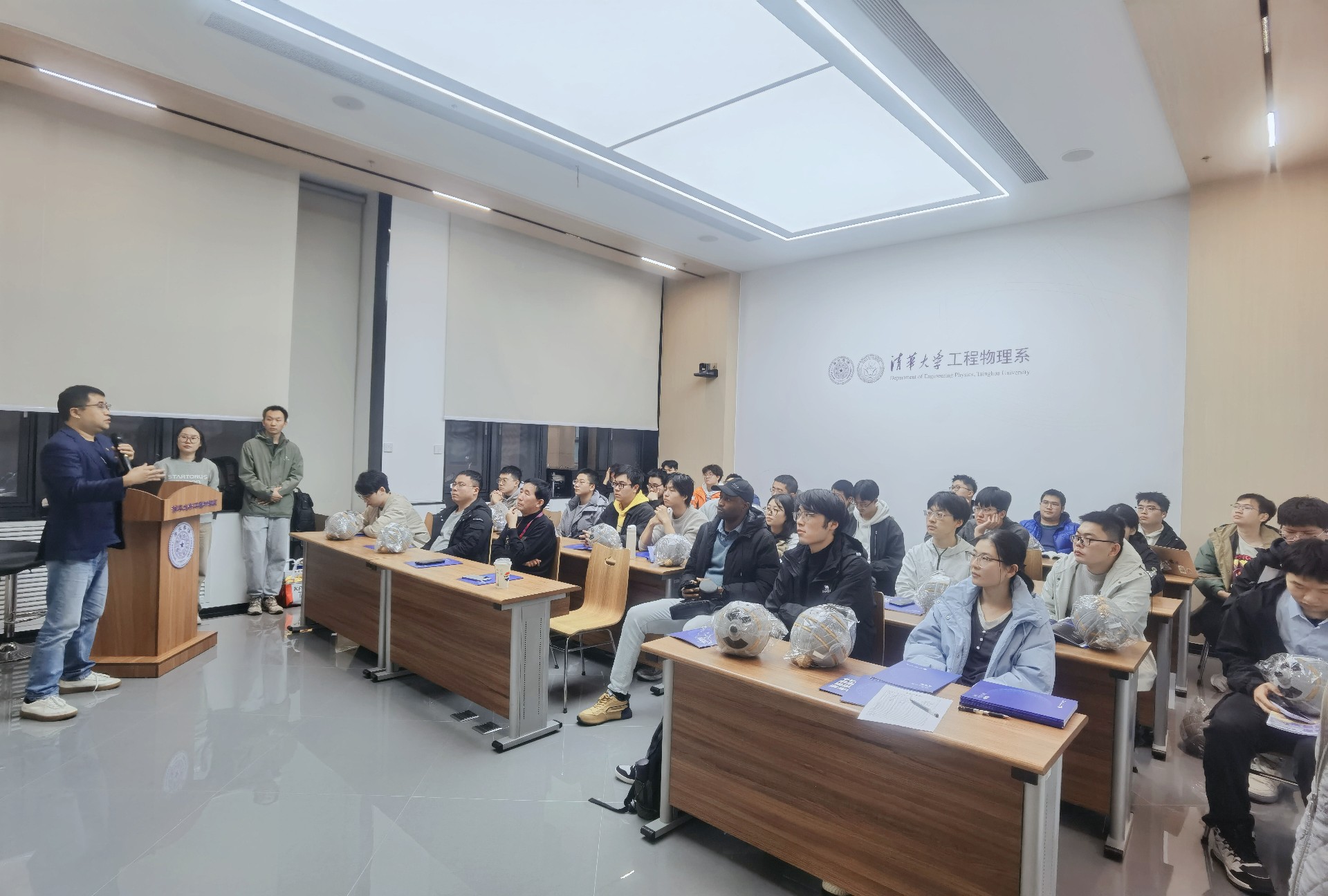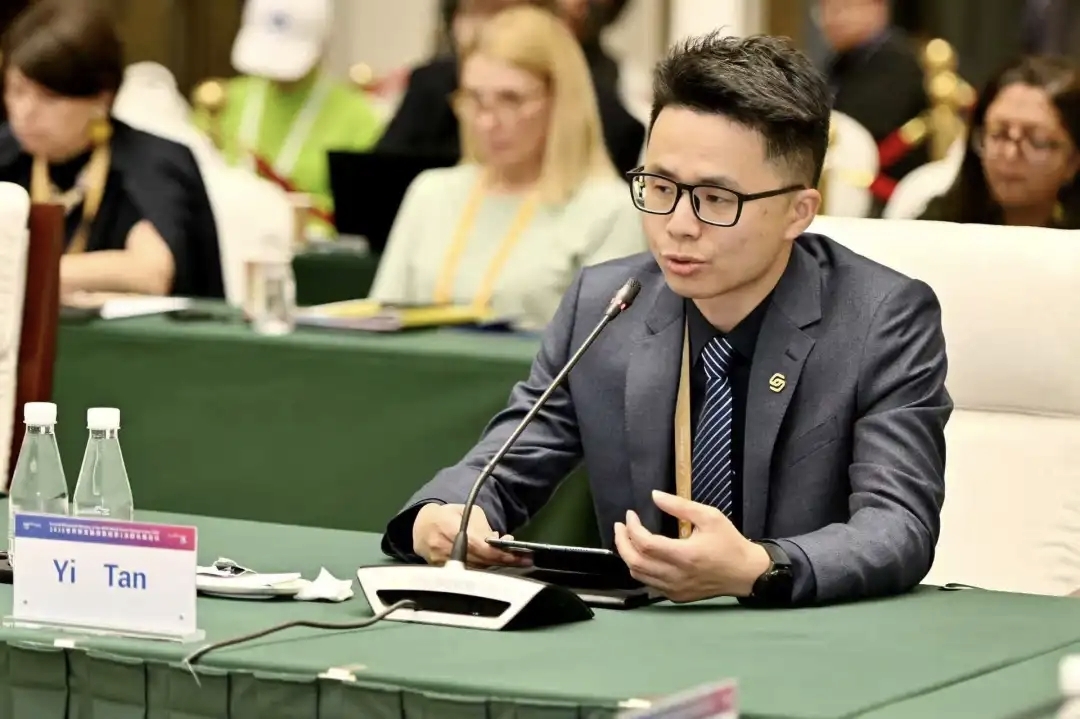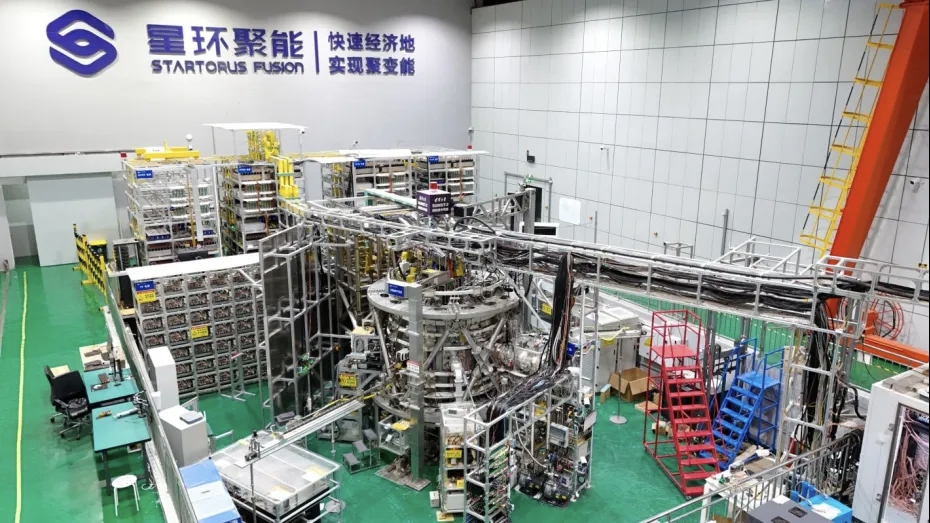In recent days, the spherical tokamak SUNIST-2 ran the first round of operation after completion and achieved its first plasma.
Installed at an experimental site of Startorus Fusion in Gaoling District, Xi’an City, Shaanxi Province, SUNIST-2 (as shown below) currently boasts the strongest magnetic field and the best plasma performance in China. Its designed parameters include a major radius of 0.53m, a minor radius of 0.33m, and a magnetic field of 1.0 tesla.
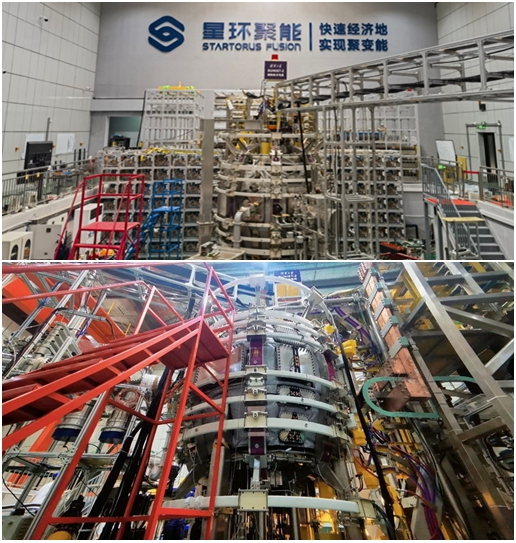
▲Experimental Fusion Device SUNIST-2
SUNIST-2 was designed by Tsinghua University and constructed by both the university and Startorus. It generated a plasma current of 100 kA in the recent successful operation, reaching the scheduled target as well as expected. The two images below illustrate the typical waveform (left) and the plasma (right). Building on SUNIST-2, Startorus will work to verify the reconnection heating method and multi-stroke operation to prepare for CTRFR-1, the next-generation technology validation device.
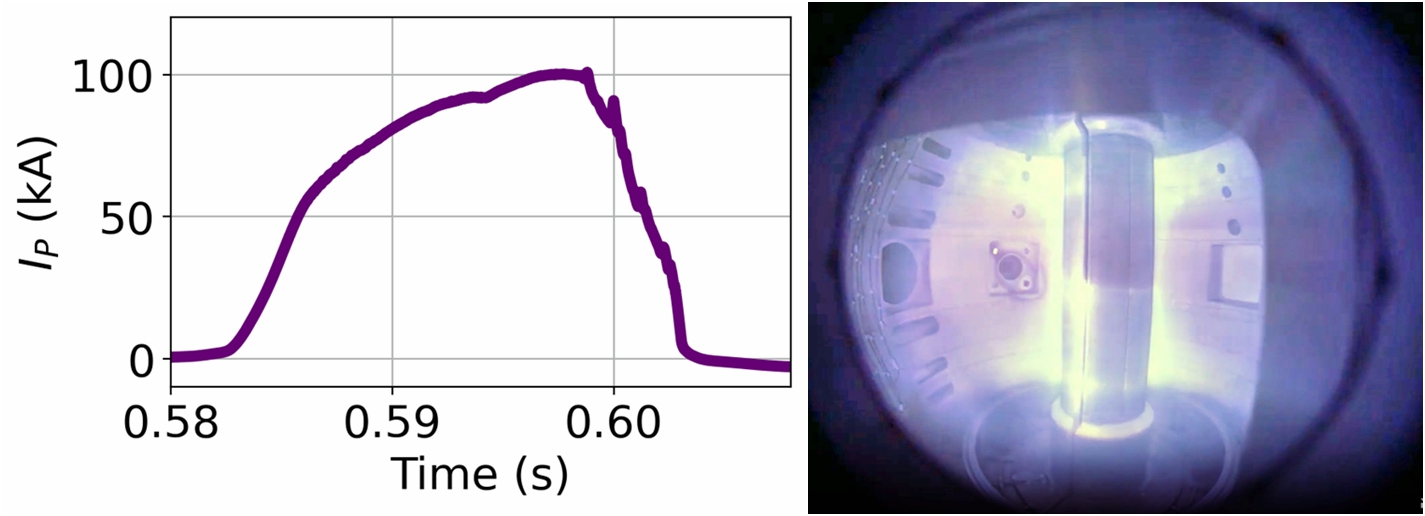 ▲Typical Discharge Waveform (Left) and Plasma Image (Right)
▲Typical Discharge Waveform (Left) and Plasma Image (Right)
Various fusion records continue to be broken, thanks to advancements in high-performance magnetic-confinement configurations, high-temperature superconducting materials with high critical current density and critical magnetic field, high heat flux diverters, artificial intelligence, and other technologies resulting from decades of research into magnetic-confinement fusion by the international community. Countries have also prepared for the arrival of fusion energy through policy and legislative measures. For example, regulatory bodies in the UK and the US plan to regulate fusion power plants with regulations significantly less stringent than those for existing nuclear power plants, providing a boost for the commercial development of fusion energy. Unlimited, safe, and carbon-free controlled fusion energy is approaching humanity at an unprecedented pace, heralding the emergence of a brand-new trillion-dollar industry.
Benefiting from the above progress, many companies in China and other countries adopt novel technological pathways to develop fusion energy, in the hope of accelerating fusion commercialization.
For instance, the Britain-based Tokamak Energy and China’s ENN focus on deuterium-tritium fusion and proton-boron fusion in spherical tokamak with strong magnetic fields respectively. Both the US company Commonwealth Fusion and Energy Singularity in China favor significantly smaller tokamaks whose magnetic fields are improved to the extreme. Helion Energy, another US company, smashes two plasma balls against each other repeatedly at a fast speed to generate fusion energy. It has announced power supply by 2028.
The fusion development technique of Startorus Fusion is based on the high-temperature superconducting spherical tokamak with high confinement performance. The device will efficiently heat the plasma up to the fusion reaction temperature through magnetic reconnection and operates in a multi-stroke manner, similar to an internal combustion engine, to continuously generate fusion energy. This unique technological approach is built on the experimentally-verified spherical tokamak design, but eliminates the need for complex and costly systems such as high-power RF waves and neutral beam injectors. It bypasses the challenges of current drive and also enhances tritium breeding ratios. These design choices greatly simplify the structure of the fusion reactor, significantly improve its economic viability, and reduce the complexity and difficulty of operating fusion power plants, exhibiting outstanding commercial advantages.
▲Snapshot of the Principle Demonstration Video
Startorus’s fusion approach has gained recognition from the industry and received support from several celebrated institutional investors in China.
After securing the angel investment in 2022, Startorus expanded its team scale, constructed the site, and cooperated with the Department of Engineering Physics, Tsinghua University, and the Institute of Plasma Physics, Chinese Academy of Sciences in rapidly and accurately assembling the main body of SUNIST-2. It has developed a series of innovative techniques or patents, including ultra-high vacuum sealing, low-resistance detection for high-current connectors, and position and vibration measurement and analysis.
In addition, Startorus has independently designed and developed modular and second-level pulsed power supplies for toroidal, poloidal, and ohmic magnet coils. Utilizing high-current IGBTs and supercapacitors, these power supplies are able to generate a unidirectional output current of up to 110 kA and a bidirectional output current of ±22 kA and have a response time of 0.1 ms, meeting international advanced standards in multiple aspects. The main body of SUNIST-2, along with the supporting power supplies and vacuum equipment, are all monitored and controlled through a self-developed control system based on microservices and web pages. Moreover, Startorus has built fundamental plasma diagnostics for magnetic, interferometric, and radiation measurement, and developed basic integrated simulation codes of plasma discharge for prediction and operational guidance.

▲Some Power Supplies for Magnets
During device construction, Startorus has formed a cross-disciplinary team composed of fusion science, engineering technology, basic technique, and supporting departments and gradually developed a corporate culture of valiant attempt and shared responsibility. The team members are courageous enough in innovation. When confronted by adversities and difficulties, they neither shirk responsibilities, nor are made scapegoats, but work together with each other to find out reasons and come up with solutions. Such a working atmosphere helps to resolve various problems.
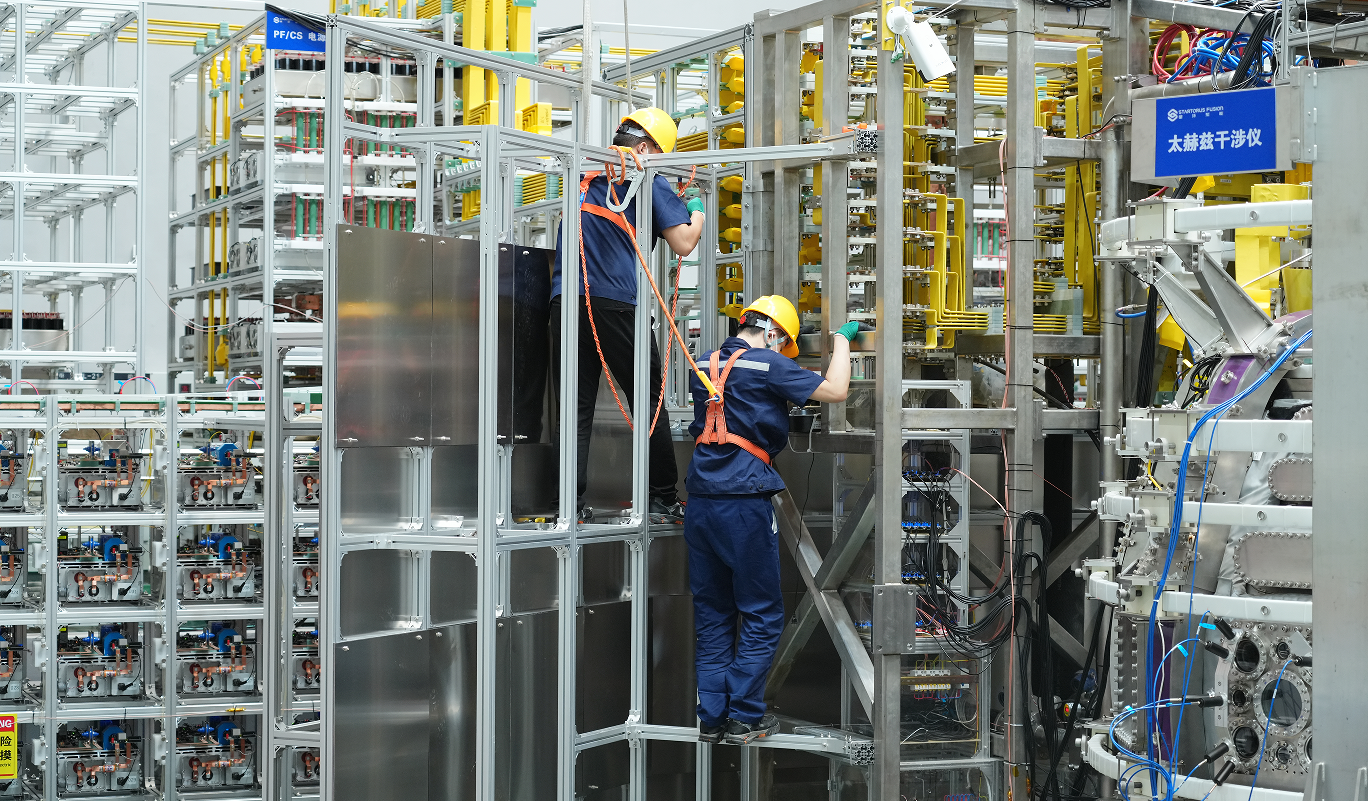 ▲Working Scene
▲Working Scene
With the construction of the experimental fusion device, Startorus has basically given shape to a supplier system along the upstream and downstream industrial chain in Xi’an and its surrounding areas, involving multiple industries such as machinery, instruments, electronics, and information technology. This has stimulated the development of local fusion-related industries.
The successful operation of the experimental fusion device is just one small step toward the target of achieving fusion energy in a fast and cost-effective manner. Looking ahead, Startorus will stay guided by the corporate philosophy that weighs actions over words and values innovation, stick to the development choice of independence along the whole industrial chain, and rise to challenges to push the envelope of engineering, until the ultimate energy source is made a reality.


